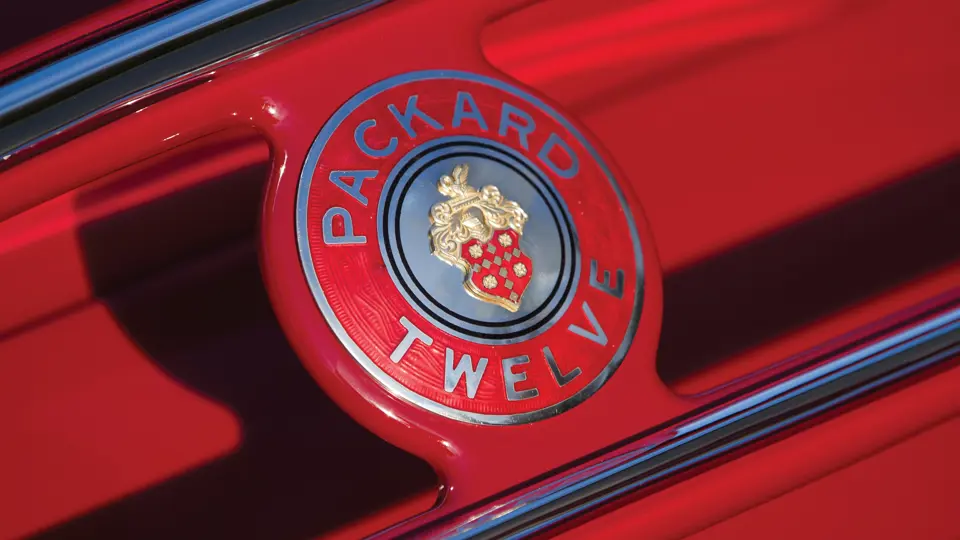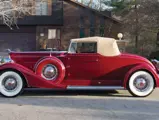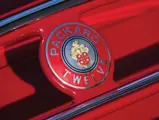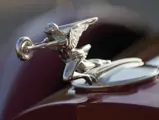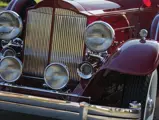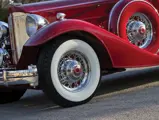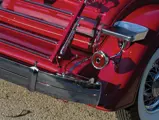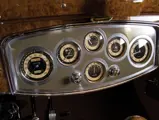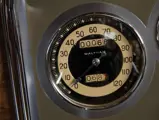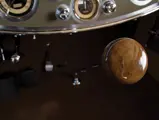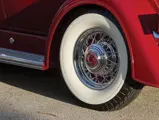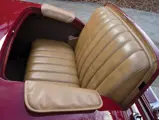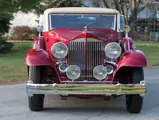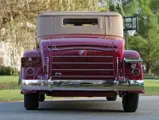Model 1005. 160 bhp, 445.5 cu. in. modified L-head V-12 engine, three-speed manual transmission, solid front axle and live rear axle with semi-elliptic leaf springs, and four-wheel servo-assisted mechanical drum brakes. Wheelbase: 142 in.
For 1932, Packard had pulled out all the stops by extending the range at both ends of the catalogue. There was a new smaller, lighter entry-level car, the Model 900 Light Eight. Selling for $1,750 to $1,795, the Light Eight was aimed at senior Buick customers. However, it cost much more than a Buick to build, and it was dropped at year’s end. The show-stopper, however, was a new Twin Six model. It was introduced in January 1932 and was priced from $3,790 to $7,950, directly countering Cadillac, which, nearly two years earlier, had startled the world with not just a V-12 but also a V-16. The Twin Six was offered in two wheelbases, like the Deluxe Eight, and it also had a line of Individual Custom bodies, with the preponderance of them by Dietrich.
Twin Six was a venerable name in Packard history, and it was the pride of the Packard line from 1916 to 1923, with its 60-degree L-head V-12 that had two blocks of six cylinders set on an aluminum crankcase. It was designed by chief engineer Jesse Vincent, and it displaced 424 cubic inches and developed 88 horsepower. The Twin Six name, which was supplanted by Packard’s straight eight in 1924, remained dormant until 1932, when it returned as a larger, more powerful engine: a 445.5-cubic inch V-12 that could produce 160 brake horsepower at 3,200 rpm.
The Twin Six was designed by Cornelius Van Ranst, whose credits included the Cord L-29, and it was originally intended for a front-wheel drive Packard, but that was a project that proved to be stillborn. The engine, however, survived and was transplanted to the chassis of the Deluxe Eight. It was a 67-degree vee that was of unusual configuration, as it had valves that were nearly horizontal and it was actuated by hydraulic tappets. The combustion chamber was partially in the block, giving rise to the description of a “modified L-head.” Van Ranst explained the design was “selected to make the powerplant as compact as possible while leaving adequate room for a horizontal valve mechanism within the vee, and to eliminate the synchronous periods which frequently occur in multi-cylinder engines designed for equal firing intervals.” Van Ranst was particularly proud of his zero-lash valve system, which was responsible for the remarkable silence of these engines.
This new Twin Six, however, was only a modest success. By year’s end, just 549 had been built. For 1933’s Tenth Series, the company retrenched a bit. The Standard Eight and Deluxe Eight were renamed Eight and Super Eight, respectively. The V-12 returned and was simply called the Packard Twelve. Individual Customs were now the province only of the Model 1006 long-wheelbase line. There were also engineering improvements: a new cruciform chassis frame, an angle-set hypoid differential, three-position headlamps, and new carburetors. The Twelve was mechanically the same as its Twin Six predecessor, but now it had a new single-plate, vacuum-assisted clutch.
Packard had always eschewed model years, introducing a new “series” whenever significant changes were made. In practice, however, the registration processes of the 48 states resulted in a model year being assigned when a car was sold, if not before. Packard typically introduced new series around the first of the year, which aligned fairly neatly with state systems and the policies of the National Automobile Chamber of Commerce. Nineteen thirty-three was an exception, as production of the Tenth Series was abbreviated, because Packard, in effect, shortened the model year to concentrate on improvements for 1934. Production of 1933s ended in August, with only 520 Twelves being built.
Knowledgeable Packard authorities count just 50 twelve-cylinder coupe roadsters, or what Packard called convertible coupes, being built in the Tenth Series, beginning with body number 639-10. That makes this one the final body of that style, which is corroborated by the car’s August 26, 1933, delivery date, just five days after production of the Eleventh Series began. The Berry Motor Car Company, of St. Louis, handled the sale.
The current owner obtained it from Packard Twelve expert Dennis Sobieski in 1996, after the completion of a four-year, no-expense-spared rebuild. Even though it is now an older restoration, the car has been well cared-for, and the dark red paint nicely sets off the beige leather. It presents very well and has a long string of awards. It has earned Best of Show at the Barrington, Illinois, concours and the Glenmoor Gathering in Ohio, and it was judged Best Packard at Cincinnati’s Ault Park Concours d’Elegance. Its superb preservation is attested by it being selected as Most Elegant Full Classic at the second annual Celebration of Automobiles at the Indianapolis Motor Speedway in May 2012.
This rare, red Packard shines with wide whitewalls on chrome wire wheels, and it also has dual side-mounts with metal covers, with each carrying a mirror. Pilot Ray driving lights are mounted to the front bumper. The convertible top is tan canvas, and the side windows are equipped with glass wind wings. A new owner will be well placed to earn even more trophies.
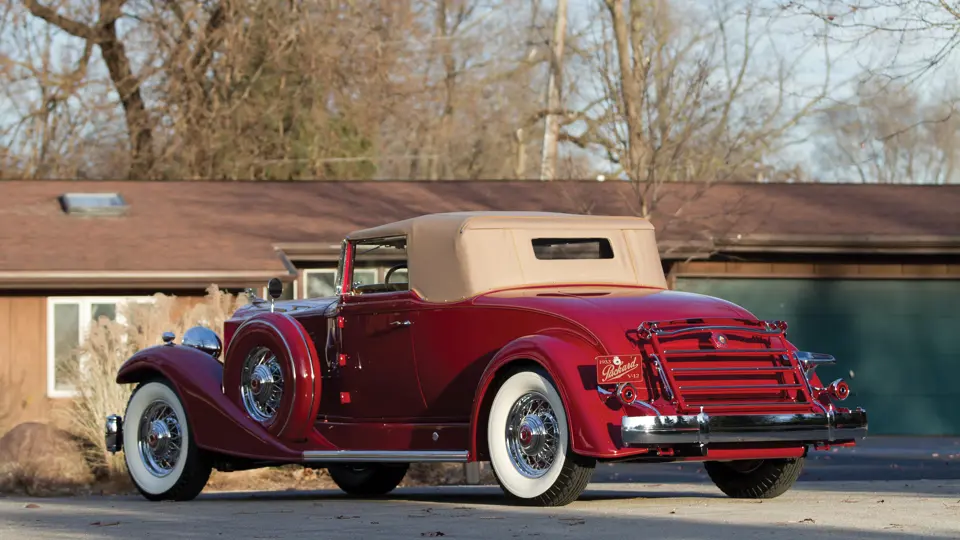
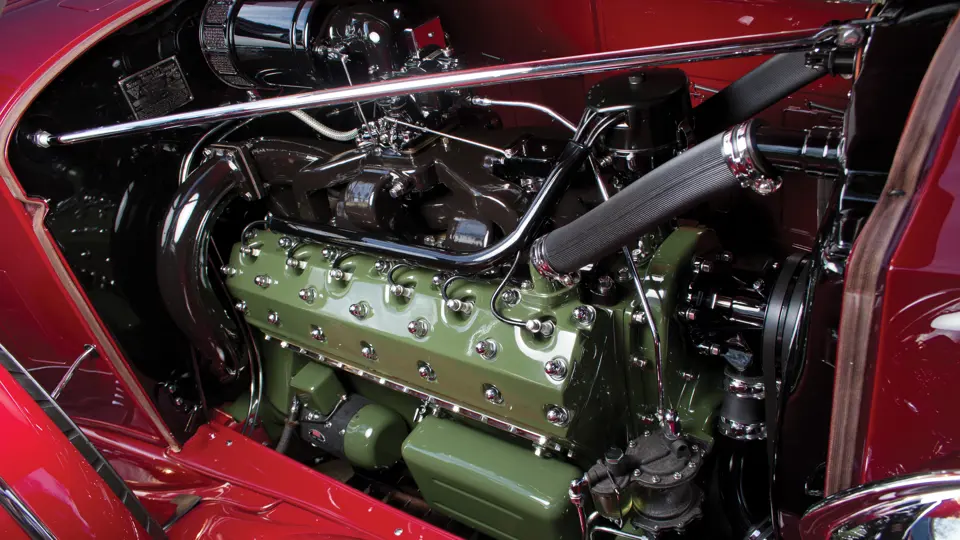
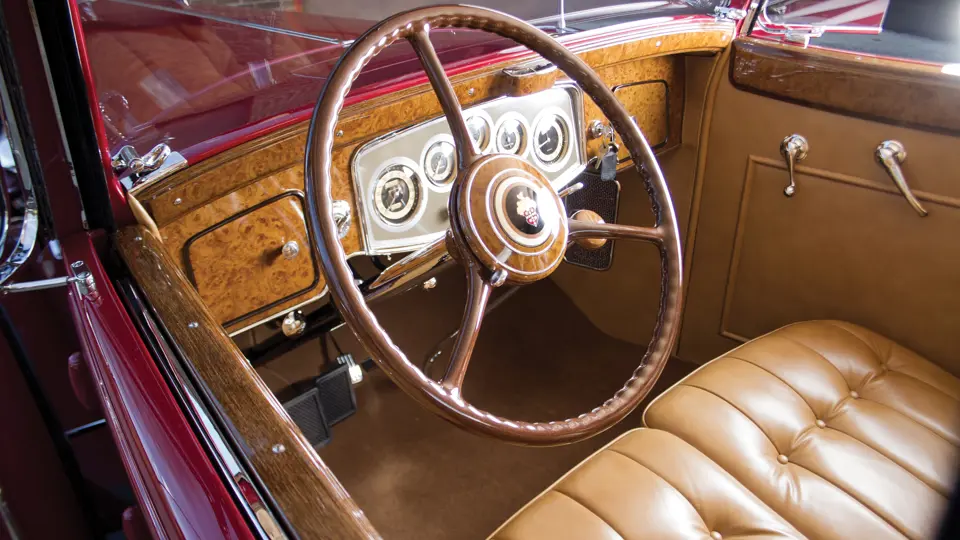



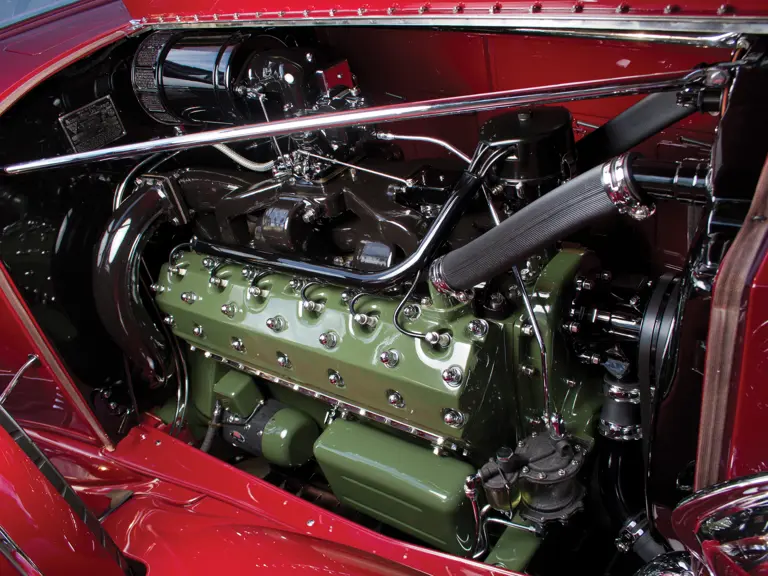
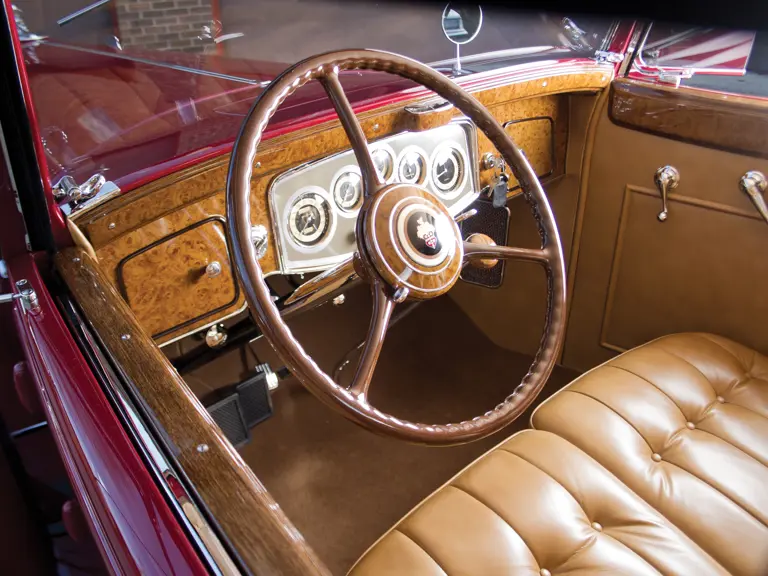

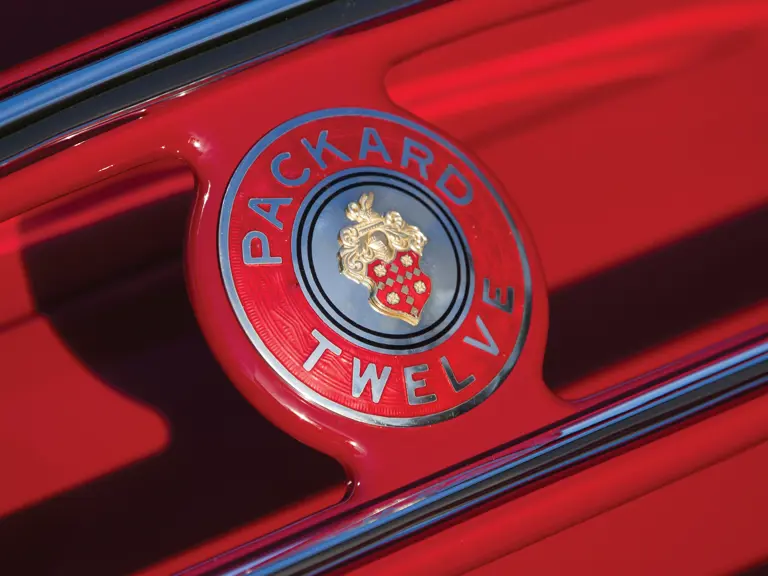
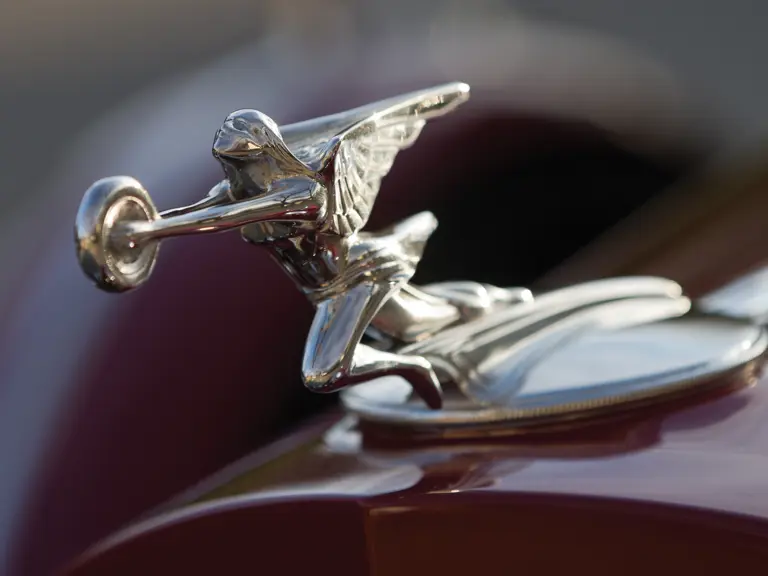

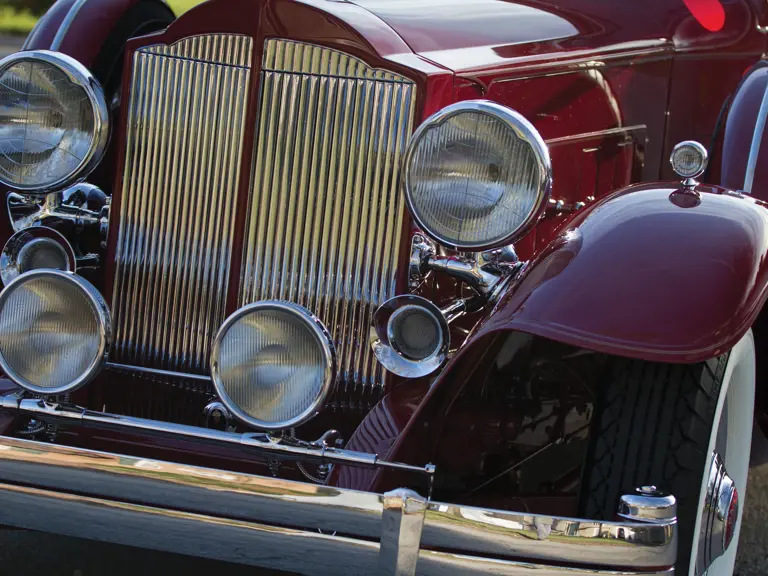
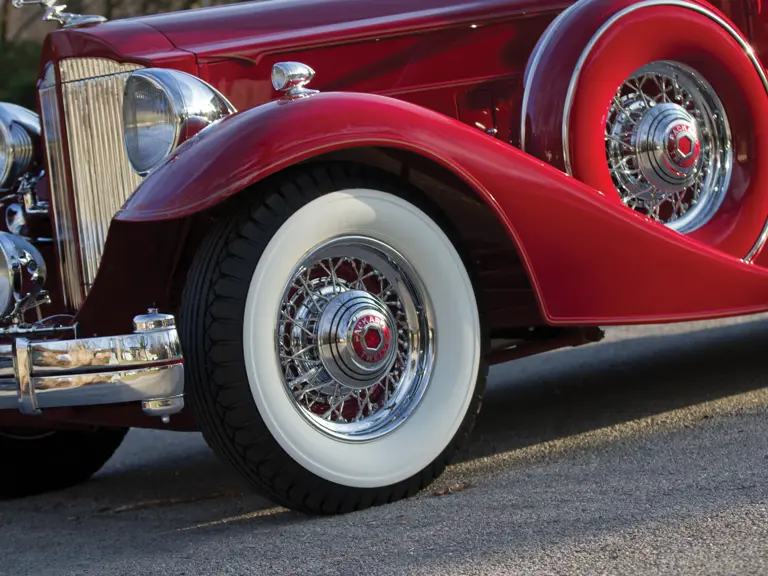
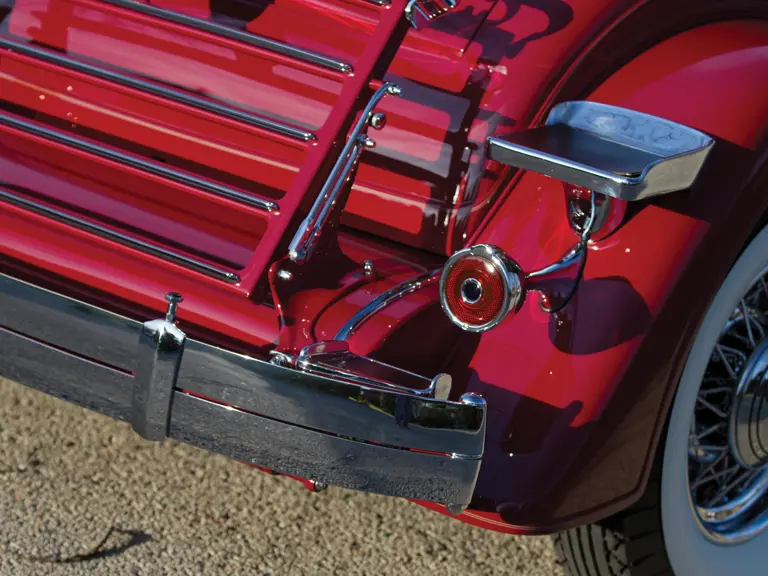


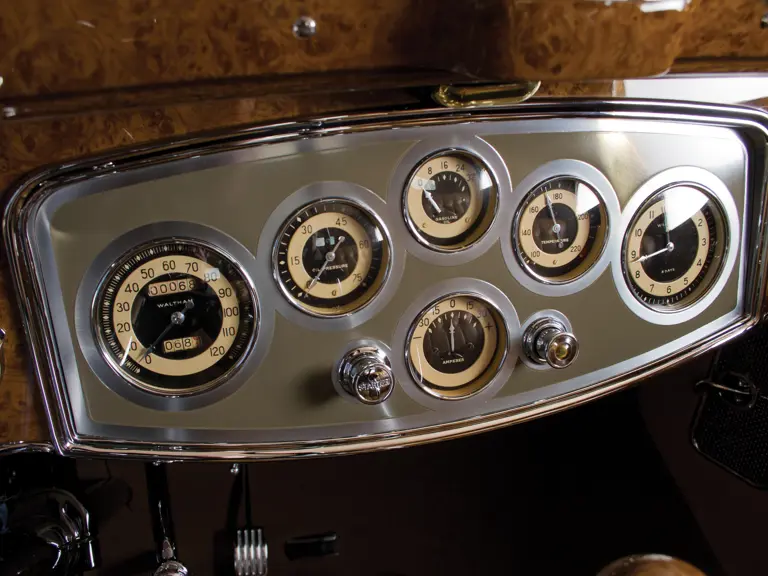


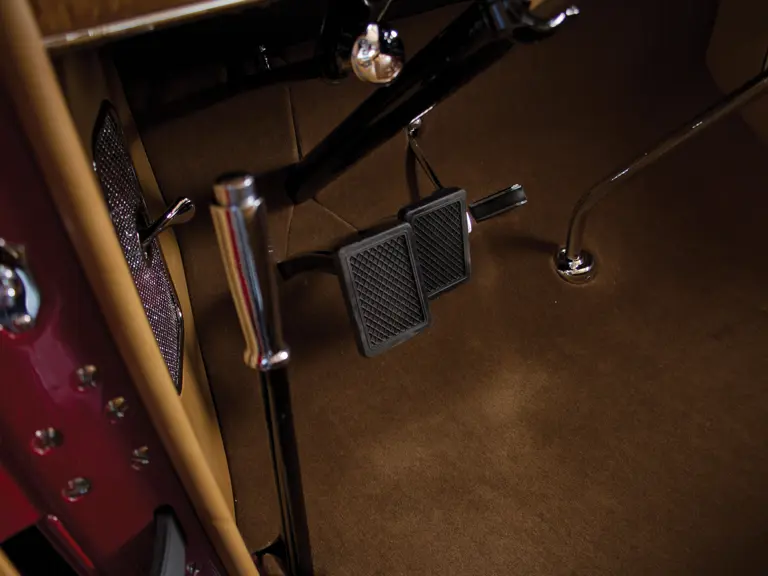

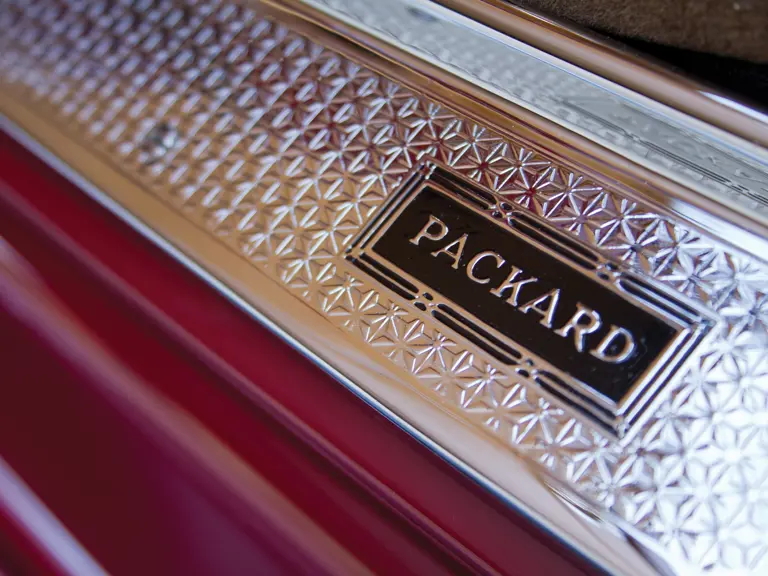
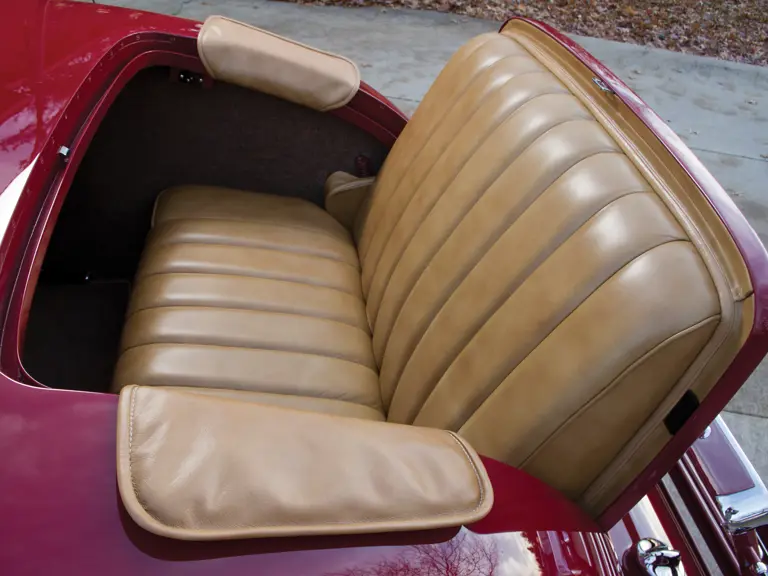

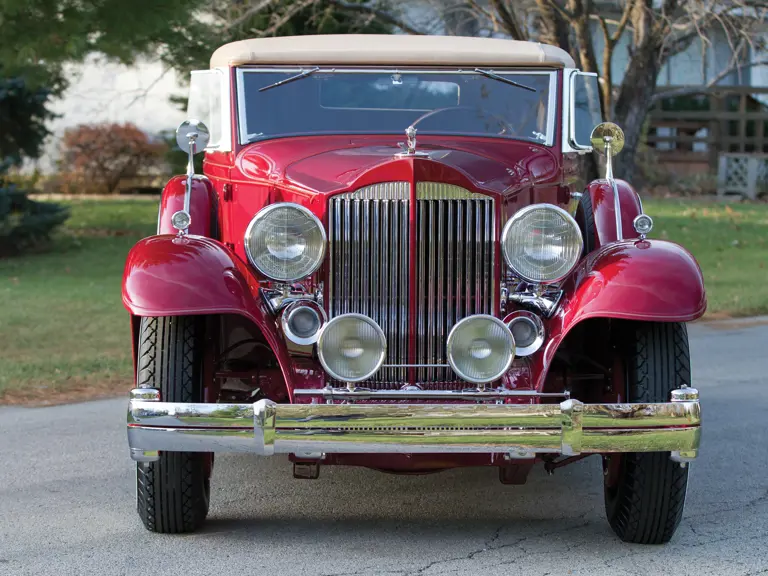
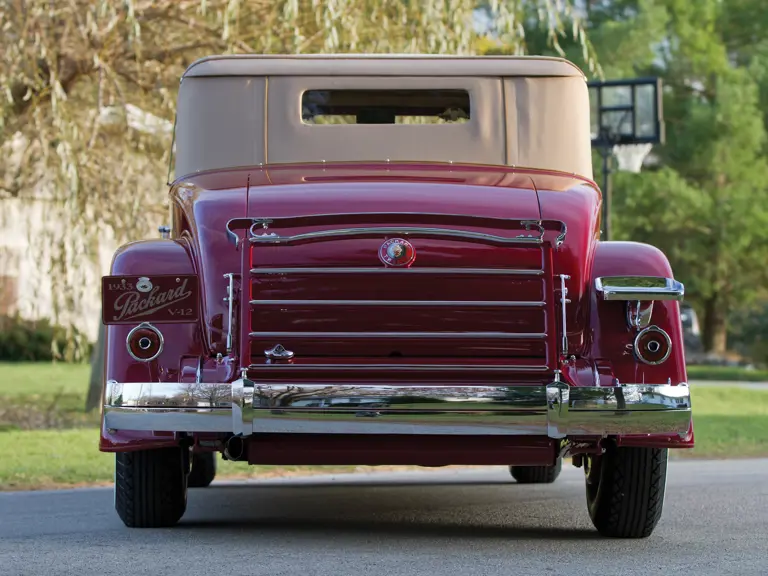
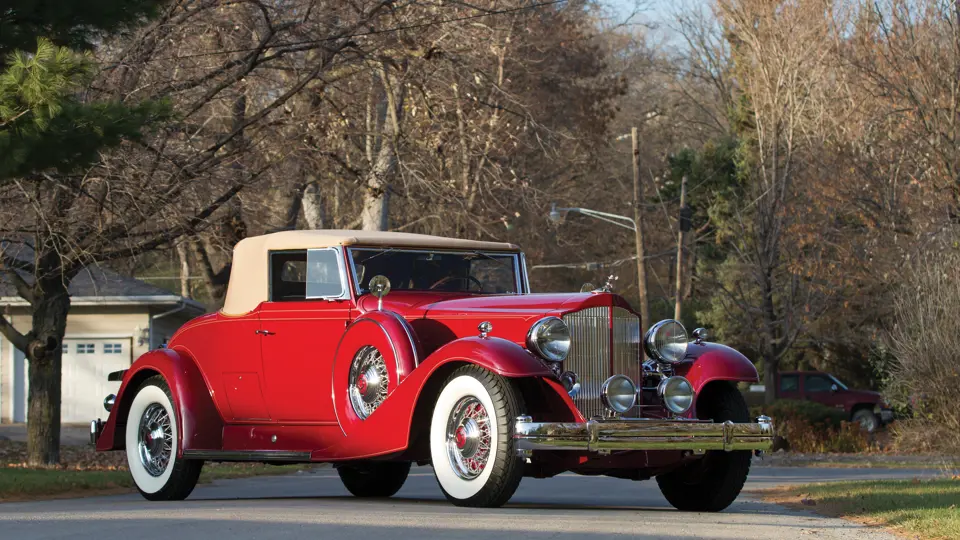
 | Phoenix, Arizona
| Phoenix, Arizona

